By Reach Brands
The ‘naturalisation’ of mass manufactured food and drink is creating a more homogeneous marketplace. And as a result, brand propositions and identities are becoming less distinct. What does this mean for the future of food brands – and where is it all heading?
Consumers today not only want to know that their food is safe, they also want it to be healthy – and even health-enhancing. Additives are becoming Public Enemy Number One in the fight against obesity, adding to the list of evil ingredients such as fat, sugar and salt.
Then we add to this consumers’ never-ending appetite for convenience and chasing quick-fix, instant solutions to health and wellbeing. It doesn’t seem to matter whether nutritional ingredients are naturally occurring within a product – or are an added functional benefit. Calcium, wholegrain, Omega 3 and fibre for instance are often added to boost a product’s nutritional value. We call this ‘short cut’ health – the desire to be healthy for as little expended effort as possible.
Brands are responding to these consumer concerns and desires by investing large sums of money into altering the composition of their products. They haven’t only been removing the ‘nasties’ but also adding in ‘goodies’ like calcium and wholegrains. And playing up any possible health credentials the product may have, no matter how tenuous, either overtly through claims or implied through clever and subtle messaging in the design communication
There seem to be two main strategies at work:
1. Some have just created an information flash (although they are utilising healthy green and natural visual language) on their pack to make the product appear healthier, while leaving their brand proposition untouched. See Nesquik and Chicken Tonight below:
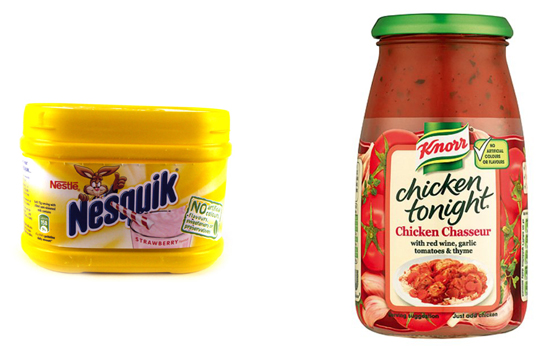
2. However, others have decided to make a step change and really increase their visual communication and feel of naturalness. Here are three really good examples from Weetabix, Dairylea and Ambrosia:
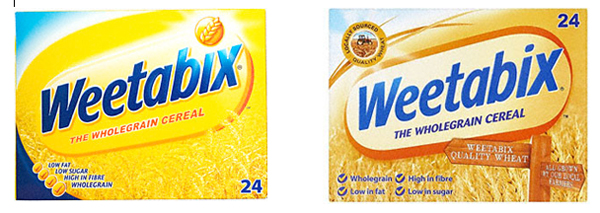
Old brand identity New brand identity
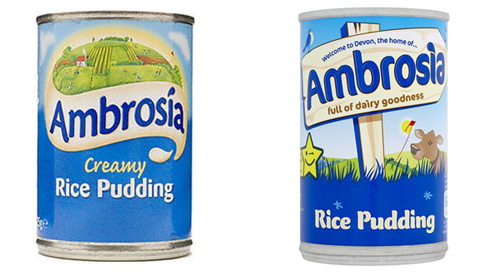
Old brand identity New brand identity
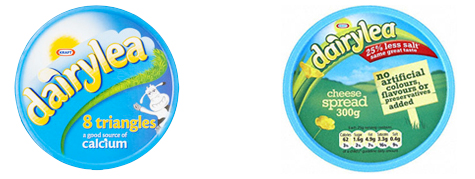
Old brand identity New brand identity
All three of these major players have substantially increased their communication of naturalness. These subtle differences are likely to change consumers’ perceptions of the product and reposition themselves in peoples’ minds. There are many other brands we could have used to illustrate this point such as Nature Valley, PG Tips, Walkers Sunbites, Batchelors Cup a Soups and so on.
The problem that’s starting to come to light is that there are only so many ways you can simply communicate naturalness e.g. sun, sky, trees, plants, animals. Historically this has been the visual territory of the organic or all-natural ingredients brands as you can see below:
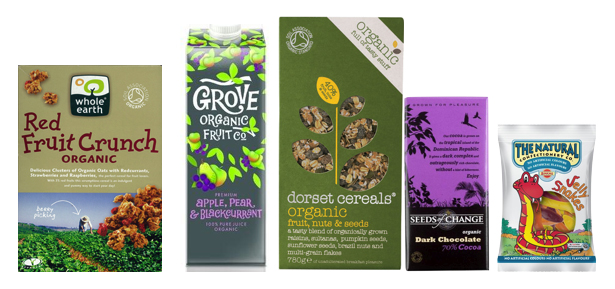
There has always been a clear visual distinction between the look of processed and all natural/organic brands. But as more processed brands adopt this natural look, the two categories are beginning to merge and the differentiation is disappearing, giving them less distinct propositions in the eyes of the consumer.
Going forward natural and nutritious food is likely to become more and more the norm rather than the exception. This means that having it as part of a brand proposition will not be a very powerful or impactful message – and certainly not a unique selling point in itself. Having an engaging brand character and clear brand story is going to be much more important in the future. Food brands will become less defined by their product attributes and more by their emotional connections.
The days of being able to instantly spot the organic or the truly natural and healthy options at fixture are already becoming difficult for consumers. It will probably be the small and the organic brands who suffer the most as they have been the ones most reliant on their natural and nutritious credentials. Larger brands have their heritage and many other associations built from consumer ATL support.
Long term, the market is likely to move from something like this:
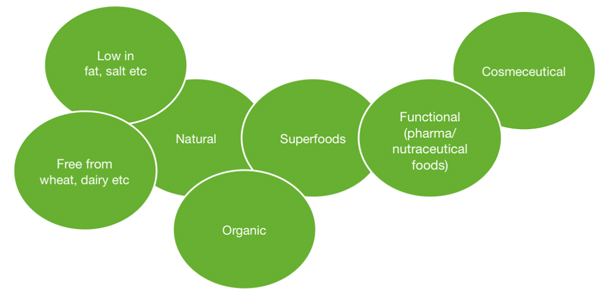
to something like this:
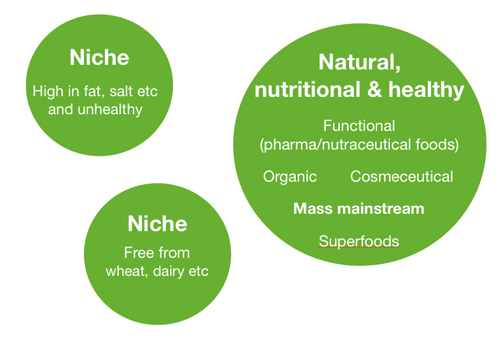
It’s likely that the ‘high in’ and unhealthy food products will be looked at in the same way that we now laugh at the 1970s Vesta Curry meals, Mighty White bread and Smash instant mashed potato. It may take another 5 to 10 years for the market to complete its transformation, but momentum is building fast. Even such iconic brands as Heinz are beginning to take steps towards ‘naturalising’.
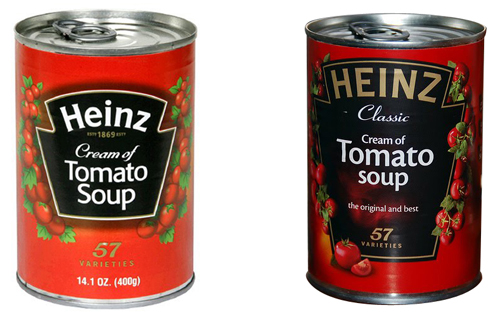
Old brand identity New brand identity
So although creating a more natural perception may be important to your brand now you also need to ensure that a strong brand character and story is being built to protect and prepare your brand for a very different market dynamic in the future.